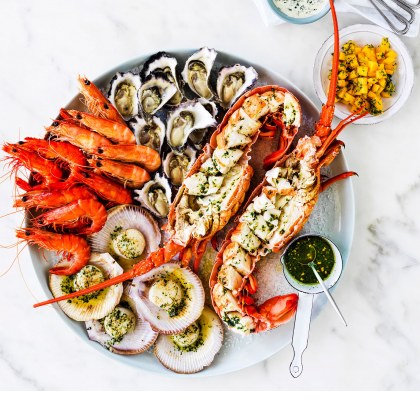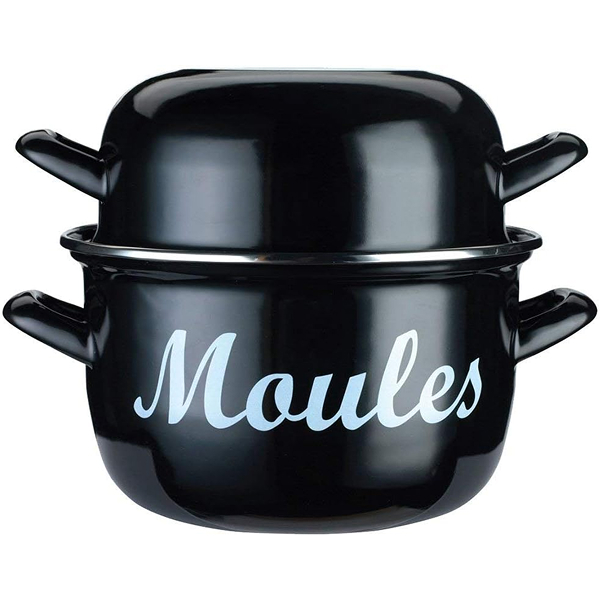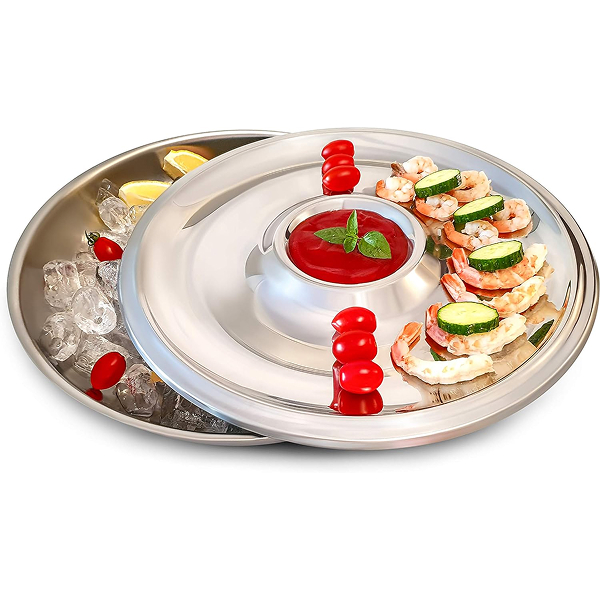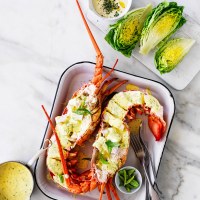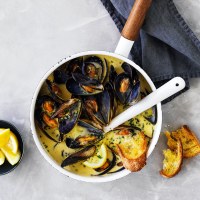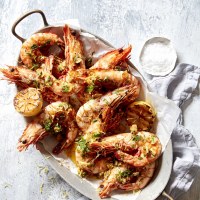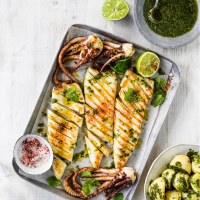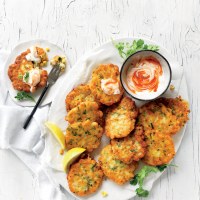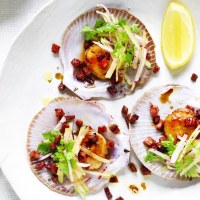How to store and freeze fresh seafood
Eating fresh seafood is a wonderful experience - from beautifully flaky and light white fish, to the briney pop of a plump prawn, to the delicate sweetness of crabs or scallops. We're lucky to have access to top quality seafood in Australia, but if stored incorrectly, seafood can degrade easily and lose its flavour and quality. Find out how you can easily store or freeze your seafood to keep it as fresh as possible.
Buying seafood
Make your seafood purchase the very last purchase before you go home. Use a chill bag or esky to carry your seafood, or ask your fishmonger to give you a bag of ice. Never leave seafood in a hot car, and don't leave it out of the refrigerator for longer than an hour. The freshest, best quality seafood will store better and for longer, so follow our tips for choosing fresh seafood.
Top tip: Every hour out of the fridge takes a whole day’s shelf life from the seafood.
Storing seafood in the fridge
These are the general rules for storing seafood such as fish fillets, whole fish, cooked and green prawns, squid and octopus. Live crustaceans and mussels, pippis and clams are treated slightly differently.
- Remove seafood from packaging - So it will cool faster. If kept in the packaging this will insulate your seafood, so it will take longer for it to cool below 5°C (optimal for storing seafood).
- Place seafood on plate or tray - Cover with damp paper towel and then tightly wrap with cling film. This will prevent your seafood from drying out and prevent fishy odours escaping.
- Position in the coolest part of your fridge - Usually the bottom half of the refrigerator.
Storing live crustaceans
Place in a cool dark room and cover container with a damp cloth. Make sure cloth remains damp.
Storing mussels, pippis and clams
If not purchased in sealed bags, rinse in cold water and leave the container ¼ full of fresh water. Cover with a damp cloth and place in the warmest part of the refrigerator, either top shelves or the crisper.
How long does seafood last in the fridge?
Even the freshest seafood has a short shelf-life in the fridge, use the guide below to determine how soon you should use your seafood.
- Scaled and gutted whole fish - use within 2-3 days
- Fish fillets - use within 1-2 days
- Squid, cuttlefish and octopus, rinsed and cleaned - use within 2-3 days
- Green prawns - use within 1-2 days
- Sashimi - consume within 24 hours
- Oysters - consume within 2-3 days
- Live and uncooked crabs - consume as soon as possible
- Mussels, pippis and clams - consume as soon as possible
- Cooked prawns and crabs - use within 2-3 days
- Smoked fish - check use-by date, use within one week of opening package
How to freeze fresh seafood
Freezing seafood is easy and convenient, but requires a bit of care. It means you can bulk buy what is cheap and in season, and take advantage of lower prices. If purchasing seafood to freeze, prepare and freeze it as soon as possible.
All seafood, but especially fish fillets, are prone to freezer burn which reduces its culinary quality. Store it correctly to reduce the risk of freezer burn. Vacuum sealing is the best way to protect your seafood while it is in the freezer. If this is not an option, follow the steps below to freeze your seafood:
- Wrap tightly in cling wrap - remove as much air as possible. For prawns, place directly inside sealable container and cover with water.
- Place inside sealable container - ensure you use an airtight, freezer-safe container.
- Label and date.
- Freeze.
- Use within 3-6 months - check the guide below to see how long your seafood will last.
NOTE: for the best results, the freezer temperature must reach and maintain -18°C and not fluctuate.
How long can seafood be frozen?
Follow the guide below to get the best out of your seafood. Please note all seafood needs to be gutted and cleaned unless advised separately.
- Non-oily fish – fillets and whole fish – 6 months
- Oily fish – fillets and whole fish – 3 months
- Mussels, clams and pippis – meat only – 3 months
- Squid, cuttlefish and octopus – 3 months
- Prawns – whole, shell on (we don't recommend freezing peeled prawns at home) – 3 months
- Other crustaceans (lobster, bugs, crabs) – 3 months
How to defrost seafood
Seafood takes a while to defrost, so you will need to plan ahead.
- Unwrap seafood and place into a drip tray inside a container. Alternatively, place a cake cooling rack over a baking tray and place seafood over the top. Cover with cling wrap to stop it drying out. Defrost in fridge overnight.
- If your seafood is vacuum sealed, add to a sink full of room temperature tap water and leave for one hour.
- Pat seafood dry with paper towel and use immediately.
Use these tips to prolong the life of your seafood and you'll be rewarded with delicious meals every time. We have plenty of easy and delicious seafood recipes below, or click here for a collection of seafood recipes.
GET THE RECIPE: Prawn Cocktail Platter by Australian Eggs
GET THE RECIPE: Green Thai Curry Salmon by Passage to Asia
GET THE RECIPE: Niçoise Salad Platter by Australian Eggs

